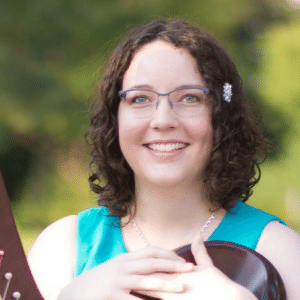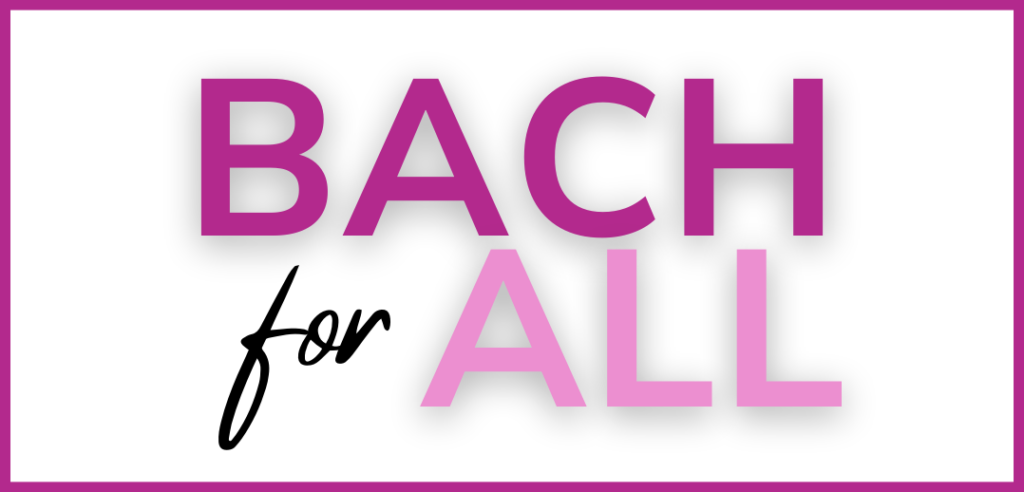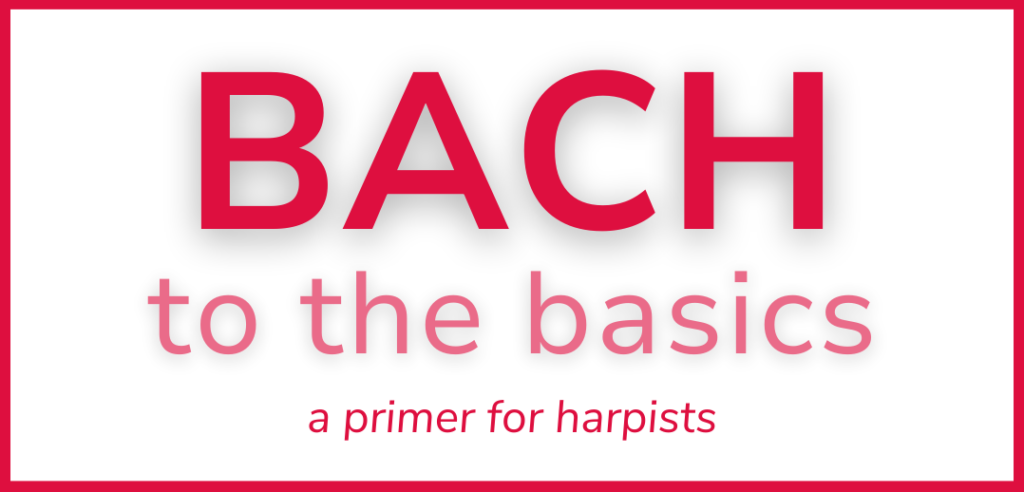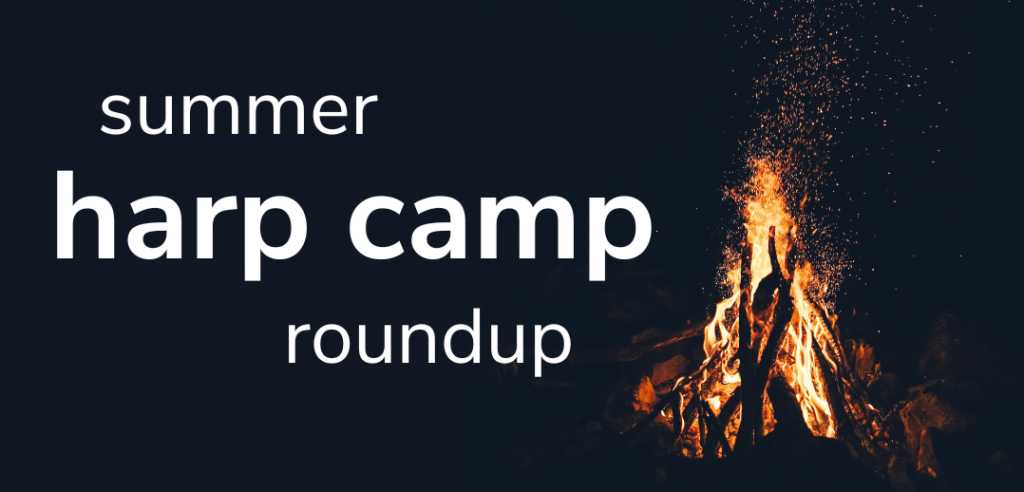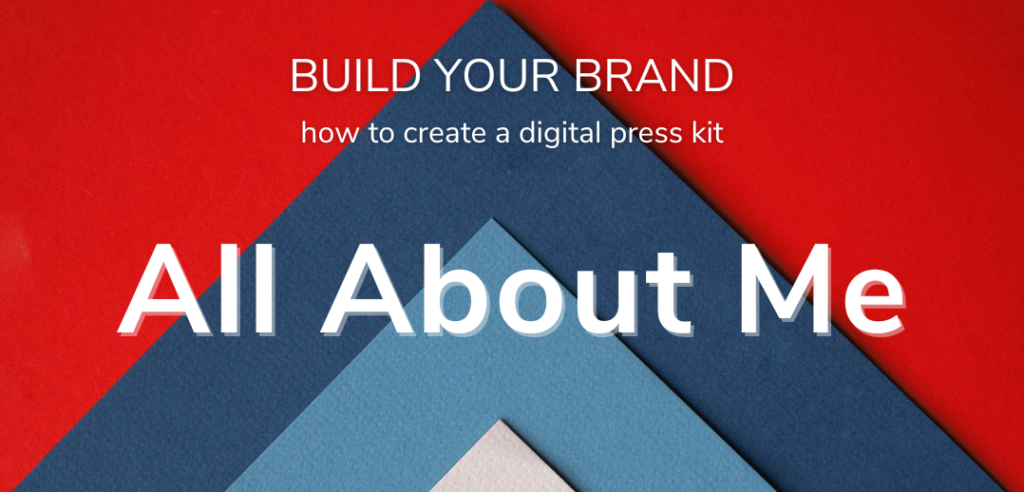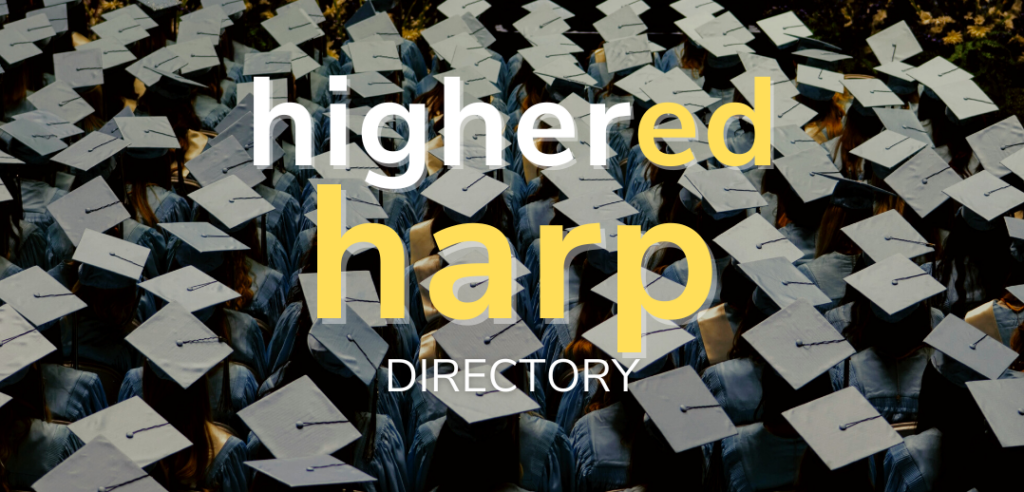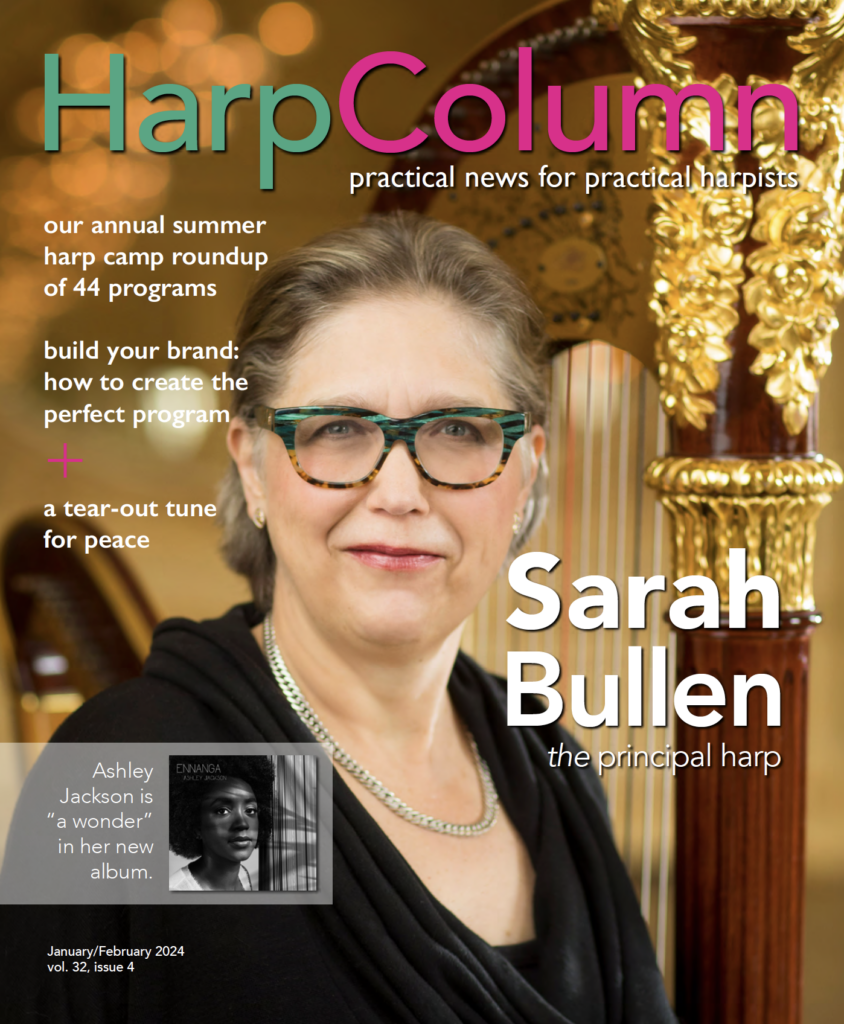A few years back, I got together with a friend of mine to plan a concert for harp, soprano, and a guest bassoonist. Since we had both traveled to France and shared a love of French music and culture, we decided to book a small art gallery filled with French paintings. Serving classic French pastries with tea during the concert created our own French café ambiance. In our program notes, we told the story of our personal connections to France and why the music we chose captured our favorite memories. The creative program added to the warm and welcoming atmosphere for our guests.
Thoughtful and creative programming will take your concert from a run-of-the-mill collection of music to an unforgettable experience that your audience will thoroughly enjoy and tell all their friends about. Concerts are an opportunity to share music in a way that only you can. In this installment of our Build Your Brand series, we’ll take a look at how to design a concert and how to get hired to perform it by sending out concert proposals.
The concert proposal is another piece of your press kit that makes you stand out as an artist. It’s a way to describe your concert program and explain why people will love it. You want the event manager at your local venue to see your concert proposal and think, “Wow, this artist is offering a fascinating show. This sounds like something no one else can do. It’s unique, it’s compelling, and I want to hire this harpist to present the program on this proposal.”
Make It personal
By adding your personal perspective on the music you’re performing, you create a more memorable experience. Some of the ways you can do this are by grouping music around an intriguing theme, including audience favorites in your repertoire, thinking through the flow of your program, providing your own program notes (either written or spoken), and adding ways for specific audiences to engage with your music. Even if you aren’t giving a formal concert, the principles of creative programming will help you engage listeners, whether you’re playing background music, proposing a library program or educational school visit, or putting together the music for a wedding ceremony.
Theme ideas
Check out our Harp Column Music blogs and Harp Column Podcast episodes for thematic inspiration. Here are some examples of topics we cover.
- An Evening in France
- Around the World
- In the Mood for Love
- Encore, Encore!
- Songs of the Sea
- Patriotic Playlist
- Spooky Tunes
- Programs for Family Concerts—episode 96
- A Musical Road Trip—episode 83
- Harp Music from Latin America—episode 98
- Music for the 26-string Harp—episode 91
- Pieces that Groove—episode 84
- Late Winter Cozy Music—episode 92
Design your theme
Building your concert program around a theme or storyline gives your listeners something to connect with. You can take inspiration from the time of year. For example, if you’re giving a concert late in the year, perhaps you’ll include Christmas carols, music for Hanukkah, or winter-themed pieces like Tournier’s “Cloches sous la neige” (Bells in the Snow) from Images, Suite no. 4. When planning repertoire, you might also consider celebrations like International Women’s Day (with a program of music by women composers), or Juneteenth (highlighting music by BIPOC composers). Even if you aren’t designing your concert based on the calendar, it’s worth thinking through the time of year. If your concert theme is more somber, for example, a festive time like December may not be the best time to schedule your performance.
Another way to choose a theme is to cater to a specific audience’s interests. For example, if you or your venue has the performing rights to play cover songs, you could program covers from a certain band or singer and invite the audience to dress up in fan gear. Or you could plan a children’s concert that includes sing-alongs with tunes that kids recognize.
If you already know the venue and you’re performing in a specific setting, choose music that will appeal to that venue’s audience base (the people who are likely to come there for concerts and shows). I once played background music in an art museum for the opening night of an exhibition about social dystopia and the signs of impending war. I realized it was important that my music was not too upbeat and cheery, so I included some modern, dissonant works to balance out the overall emotional tone. Several of the guests at the event mentioned they felt the harp music enhanced their experience of viewing the paintings and complemented the subject matter of the exhibition. As this example shows, it’s good to consider the performance setting when you’re planning repertoire.
You can also brainstorm creative ideas and themes. Maybe you want to plan a whole concert of music that mentions water in the title or that describes a water scene. Perhaps you’d enjoy performing a series of pieces that showcase folk traditions around the world. Or maybe you’ll take inspiration from a specific story you want to tell your listeners—something you think others will find fascinating about yourself, your travels, your specialized interests, your family history, or your cultural background. You can even check out recommendations for themed programs from our Harp Column Music blogs or our Harp Column Podcasts. Let yourself explore new directions, and have fun designing your theme!
Quick tips for creative concert programming
Appeal to a specific target audience
Offer a convenient time and place for the target audience (i.e. a children’s concert in the morning)
Offer a unique angle or twist for the concert—what is new or different? For example:
- a new musical adaptation of a children’s
book - a new collaboration between artists
- a chamber group with unusual instrumentation
- an additional medium, such as lighting, staging, visual art, etc.
- cutting-edge or re-imagined artistic elements, such as a musician using theatrical elements
Pick your program
Once you’ve decided on a theme, you have the outline of your creative program. Now you need to fill it in with repertoire that brings your ideas to life. Including audience favorites in your program is always a good idea. People usually enjoy hearing something familiar, as well as something new. Clair de lune by Claude Debussy is an example of a timeless favorite. For harpists’ advice on hit pop tunes and a few classic standards, check out our article on gig book essentials from the March/April 2023 issue of Harp Column.
Dance music and other pieces with a rhythmic groove are often enjoyable for the audience, whether or not they’ve heard them before. Tapping their feet to the music provides a way for them to connect and engage with what they’re hearing.
When you’re finished making a list of the music for your concert, arrange the pieces in order. Transitions between pieces should flow naturally, so choose an order that makes sense to you. Some things you might want to consider are how you want to use contrasting styles of music within your program, and what kind of music will create an impressive start and memorable finish.
As you arrange the music and plan transitions, think about how much contrast between pieces you want to have. Some contrast is good (to keep the audience engaged), but too much contrast can feel disjointed. Try to strike a balance between contrast and flow.
When you’re weighing the pros and cons of starting with a particular piece, consider how well it’s likely to capture the audience’s attention, as well as how comfortable you’ll feel as a performer. The first piece is when you’ll work through your initial nerves and warm up your potentially cold hands, so pick something that helps you get off to a good start. You’ll also want to make sure it draws the audience in. Different styles of music can create interest in different ways. Try beginning your concert with exciting, fast, rhythmic pieces, and try it with lush, rich, virtuosic harp standards. See what works best for you and the people you’re playing for.
Finally, think about what kind of lasting impression you want to leave with each person who attended your concert. Many performers like to end with something flashy and bold. Sometimes it can be effective to end with something quiet and breathtakingly beautiful. Consider the theme of your concert and find what fits best.
Draft your program notes
Writing program notes not only makes the concert more interesting for your audience, but also enriches your own understanding and interpretation of the works you perform. To get started, you might find it helpful to think about what you know about each piece in three categories: historical, analytical, and personal.
Historical information provides context. Less is more here. Your audience could search Wikipedia for biographical details on the composer’s life, so keep your historical information brief. It’s fine to include the years of a composer’s birth and death on the program, if you would like. But rather than introducing your piece with something like “J.S. Bach was born in 1685 in Eisenach,” consider starting your introduction to a piece with something that is personal, anecdotal, and interesting. Think about what is most likely to catch your audience’s attention. Find the information that is most relevant and that provides essential insights into the piece.
If you include analytical explanation, be aware of how much you include and how you say it. If you’re performing a sonata, the musicians in your audience are likely to know that there are two themes in the exposition, followed by a development and a recapitulation. Listeners who are not musicians might not be as interested in the terminology. If the structure of the piece you’re performing is really important and might be hard to grasp on first listening, you can explain it in everyday language such as, “You won’t hear the full melody until the end of the piece, but you’ll hear bits and fragments that eventually come together.” Then you can play part of the melody to help the audience listen for what is musically important.
Your personal connection to the piece is one of the most engaging parts of your program notes. This is something your audience can’t find anywhere else. As you become more familiar with your repertoire, you develop personal ideas, perspectives, and connections to the pieces you’re playing. Share these with your listeners. Tell them what the music is like from your unique artistic perspective.
You can do this by sharing stories about your experience with the piece. Why did you decide to learn it? What is your favorite part of the piece? Is there something interesting about your journey with learning the piece or gaining an appreciation of it? What do you think it sounds like? How do you think it’s innovative or different from other music you have played? What story, visual scene, or emotions does the music bring to mind for you? Another way to establish a personal connection with the audience is to tell a story from the composer’s life, so the audience feels like they “know” the composer.
Program notes don’t have to be long; you can just write a few short sentences and print out a page of program notes, or you can think through a couple things to say about each piece before you play it. If you choose to talk from the stage, practice speaking out loud for a couple of weeks before your concert to get comfortable with what you’re going to say.
Remember, you don’t have to include something historical, analytical, and personal for every piece. Just include a couple of tidbits that help build a connection between you, the music, and your listeners.
Historical Context
- musical history
- social history
- cultural setting
- historical anecdote (about piece or composer)
Historical Program Note
(meant to be spoken)
The next piece I’ll play is called Mouvement, by Swiss composer André-François Marescotti. Marescotti grew up near Geneva, in the French-speaking region where Switzerland, Italy, and France meet. Marescotti wrote music for comedy theater and was known for his sense of humor. You might hear a sort of “twist in the plot,” with an unexpected shift in the music. Listen for Marescotti’s sense of humor and see what you find.
Analytical Explanation
- form and structure
- compositional elements (harmony, melody, rhythm, color, key changes)
- technique and performance considerations
Analytical Program Note
In the lively first movement of the Harp and Guitar Sonata by Nathan Cornelius, the harp part is rhythmically interlocked with the guitar part. The dance ends with a percussion section using six different knocking sounds (three on harp and three on guitar). During rehearsals with my brother as he composed this piece, I had fun experimenting to help Nathan find different percussive sounds. I discovered how the sounds change depending on how I knock, tap, or slap the wood, and what part of the wood I strike. The second movement is a tender and gentle song; the melody passes back and forth between the guitar and harp, and I’ve found that we breathe together as we sing with our instruments.
Personal Connection
- personal anecdote
- imagery
- meaning or personal significance
- quotes from the composer
Personal Program Note
In the lively first movement of the Harp and Guitar Sonata by Nathan Cornelius, the harp part is rhythmically interlocked with the guitar part. The dance ends with a percussion section using six different knocking sounds (three on harp and three on guitar). During rehearsals with my brother as he composed this piece, I had fun experimenting to help Nathan find different percussive sounds. I discovered how the sounds change depending on how I knock, tap, or slap the wood, and what part of the wood I strike. The second movement is a tender and gentle song; the melody passes back and forth between the guitar and harp, and I’ve found that we breathe together as we sing with our instruments.
Engage your audience
Part of what will make you a unique artist is finding innovative ways to get your listeners involved. Changing up the norm can help you gain new audience members. This might mean giving shorter concerts that fit more easily into busy schedules. Maybe it’s taking your performance to an especially welcoming and accessible location—a space that is not usually a concert venue. That could be a local coffee shop that’s willing to host you, or a gazebo in a popular park. You might also consider changing the time of day or the day of the week. See if you notice a pattern in the days, times, and locations that work best for people.
Another idea is to plan a concert where the audience gets to participate. You might choose one song where you invite the audience to clap along. If you’re performing in a place that allows it, you could provide food or beverages for the audience to enjoy while you’re playing. Adding another form of media or artwork (such as projections, special lighting, or costumes for you or for the audience) can also make the concert more interesting for a broader range of people. You could even try including a Q&A time at the end of your performance—audiences are often curious about how the harp works.
If you’re getting ready for a children’s concert or a school visit, consider their interests and attention span. You may want to offer age-appropriate activities along with the music. Giving kids something to do while you’re playing helps keep them engaged. You might ask kids to imagine a scene while you play, and then ask them afterwards to raise their hands if they’d like to share the pictures your music brought to mind. If you’re playing a dance, you could invite them to clap along or to move with the music. In addition to adding activities, try to choose short pieces to help stay within the children’s attention span. A general rule of thumb to think about is the “age plus one” rule: if you’re playing for 5-year-olds, for example, consider limiting your program to pieces that are no longer than 6 minutes. Performing your pieces in an order that offers lots of contrast may also be helpful.
Dynamo demo
Audio and video demos are a great way to help event managers know what to expect when they hire you. By offering a preview of your personal artistic style, you give them a chance to decide whether your concert program is a good fit for their venue. Here are some tips for making a good first impression with your demos.
- Use music that demonstrates the best artistic quality you have to offer
- Provide a sufficient amount of music to represent your versatility
- Include information identifying each movement of each piece
- Make demos available through sharing methods that preserve audio and video quality (for example, embed videos on your website through YouTube or Vimeo; SoundCloud is another option for audio files)
Finalize your proposal
Now that you have everything planned, you’re ready to write out a concert proposal that will help you get hired to perform. Give your concert program a title that briefly captures the theme of your music. Write a few sentences about the design of your concert. To get started, try answering some of these questions: Why did you choose these pieces? Does the music follow a theme or storyline? How is your concert unique? Are you presenting the music in an innovative way? Are you adding any creative elements (such as multimedia or audience participation activities)? What can listeners expect from your performance?
Then list out the titles and composers of the repertoire you’ll perform. Add a date (such as “January 2024”) to indicate when you last updated your repertoire. Include the phrase “Please confirm with the artist prior to printing.” This gives you the opportunity to substitute pieces or change the program if necessary. Also include your website address, so that venues have an easy way to find your bio, photos, and demos of your playing. (Check out the sidebar on how to create audio and video demos that offer a high-quality preview of your artistic style.)
When you’re finished with your proposal, you can send it to local venues that might host your concert. Besides concert halls, check with libraries, schools, arts and cultural centers, anywhere you might have a personal connection, and anywhere that might be interested in the theme of your concert. For example, some cultural organizations might focus on a certain cultural history or heritage that overlaps with your concert theme. If your repertoire features music by women composers, or music from a certain time period or geographical location, look for cultural centers that may be interested in those topics.
An additional benefit of creating a concert proposal is that you already have a well-planned, cohesive program that shows your creativity and artistry. If you get the opportunity to perform, you have good reasons for the combination of repertoire that you’re prepared to play. It fits well together, and it’s interesting and innovative.
Taking stock
At this point, you’ve laid most of the groundwork for building your brand. You’ve put together the materials for your digital press kit: an impressive bio, timely press releases, professional photos, and creative concert proposals. The final step is to showcase your brand for others to learn about you, contact you, and hire you—through a user-friendly website. We’ll wrap up this series in our next issue, with tips for building a great new website or refreshing your existing website. •
Build your Brand
This article is the third article in our Build Your Brand series. The final article in the series on creating a website will appear in the upcoming March/April 2024 issue of Harp Column.







